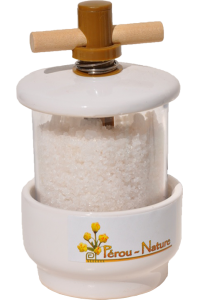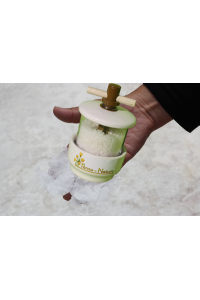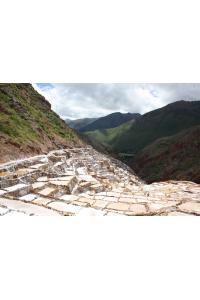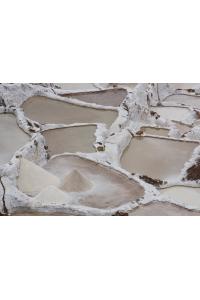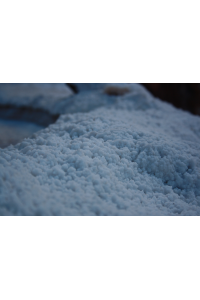You have no items in your shopping cart.
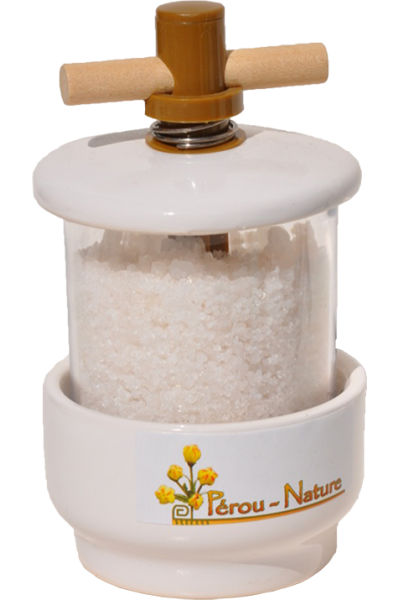
Maras salt - flower of salt
Table salt is packaged in a white ceramic mill.
Ref.: S-maras-fds
Availability:
In Stock
Out of Stock
Special Price: 0.00 €
Regular Price: 9.90 €
Presentation: Flower of salt of Maras.
The flower of salt is 100% natural. The harvesting is done manually, so as not to undergo any alteration.
Brand: Peru Nature
Overview: This salt is packaged in a salt mill white ceramic.
Directions: The Maras salt used in cooking or on the table.
Storage: At room temperature and protected from light
Ingredients: Salt maras
Weight: 90gr
Brand: Peru Nature
Overview: This salt is packaged in a salt mill white ceramic.
Directions: The Maras salt used in cooking or on the table.
Storage: At room temperature and protected from light
Ingredients: Salt maras
Weight: 90gr
Peru contains archaeological treasures of ancient civilizations attesting. The salt mines of Maras are a remnant of the Inca period. They were established and operated from 1450.
About ten million years ago, an inland sea covered much of the Andes of Peru and Bolivia. Plate tectonics has changed the scene. The water went down to swell the oceans. The evidence from this period are Lake Titicaca and the Salt mines of Maras.
In the Valley of Urubamba, the salt mines of Maras cover more than three miles on a small catchment area of approximately 700m long and 150m wide suspended terraces on the flanks of the mountain. Still used today, salt mining continues in the traditional way.
The salt mines of Maras are now being operated by an association of 300 families. Each has between 3 and 10 pools. Harvesting is seasonal as it becomes impossible during the rainy season. Farmers use this time to consolidate "pozos" (river) made of stone and clay.
The salt produced 3000 tons of salt per year.
About ten million years ago, an inland sea covered much of the Andes of Peru and Bolivia. Plate tectonics has changed the scene. The water went down to swell the oceans. The evidence from this period are Lake Titicaca and the Salt mines of Maras.
In the Valley of Urubamba, the salt mines of Maras cover more than three miles on a small catchment area of approximately 700m long and 150m wide suspended terraces on the flanks of the mountain. Still used today, salt mining continues in the traditional way.
The salt mines of Maras are now being operated by an association of 300 families. Each has between 3 and 10 pools. Harvesting is seasonal as it becomes impossible during the rainy season. Farmers use this time to consolidate "pozos" (river) made of stone and clay.
The salt produced 3000 tons of salt per year.
- produit phare : vrai
Add your comment
Comments

